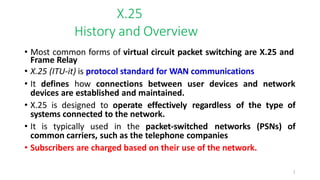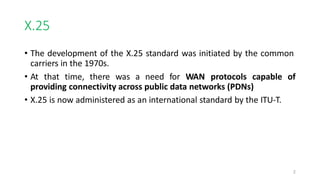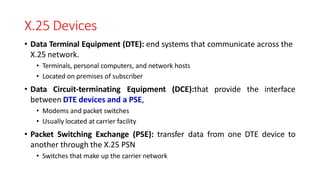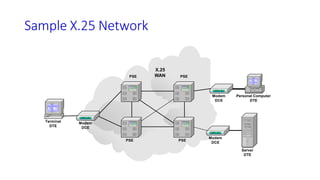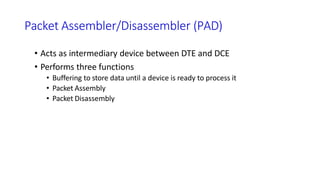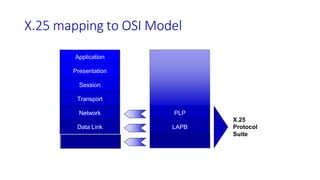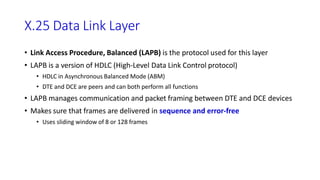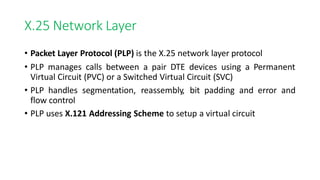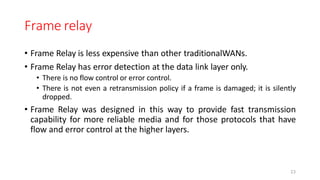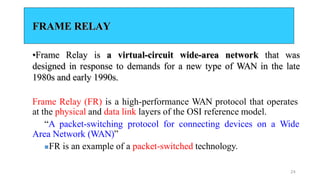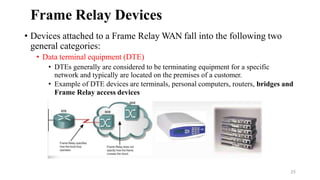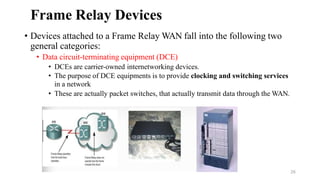X.25 is a protocol standard developed in the 1970s for wide area network communications. It defines how connections are established and maintained between user devices and network devices. X.25 operates at the physical, data link, and network layers of the OSI model. It uses LAPB at the data link layer and PLP at the network layer to transfer data and establish virtual circuits between DTE devices across a packet switched network. Frame Relay was developed later to provide higher speeds and efficiency compared to X.25.
